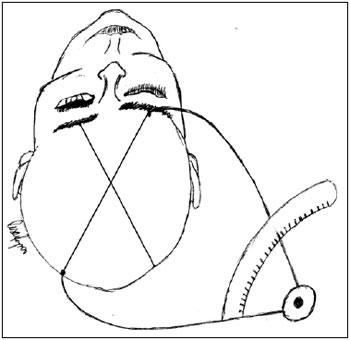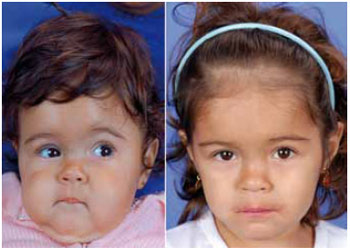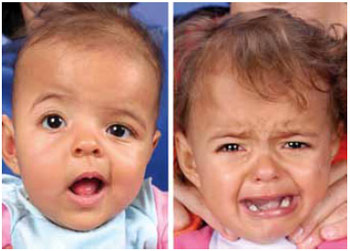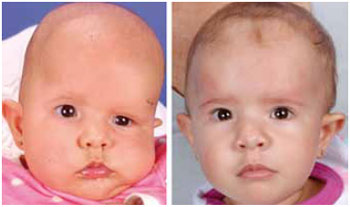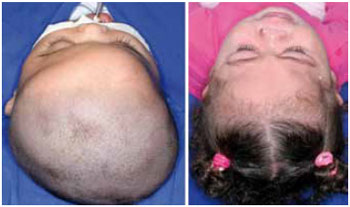ABSTRACT
Introduction: Unilateral coronal craniosynostosis (UCC) is the unilateral premature ossification of the coronal suture, leading to a 3-dimensional deformity that may affect the skull and orbits. Objective: The purpose of this study was to measure and compare the craniofacial asymmetry of patients with UCC in the preoperative and postoperative periods to assess the effectiveness of surgical UCC correction. Methods: Nine patients (4 girls and 5 boys) underwent surgical correction of UCC between January 2007 and December 2010. Their craniofacial dimensions were measured with a goniometer to calculate the craniofacial asymmetry index (CAI) in the preoperative and postoperative periods, and the CAI averages of the periods were compared. The CAI was calculated as the ratio of the craniofacial diagonal measurements of the unaffected side to those of the affected side. Results: The mean patient age was 2 years 1 month. The average surgical time was 2 h 46 min. The average volume of transfused blood was 280 ml. The preoperative and postoperative CAI averages were 1.045 and 1.009, respectively (p=0.0109), indicating a strong tendency for symmetry after the surgery. Conclusion: Surgical UCC correction is effective for achieving craniofacial symmetry. Overcorrection of the bony structures is required to obtain bone symmetry postoperatively.
Keywords: Craniosynostoses. Plagiocephaly. Craniofacial abnormalities.


